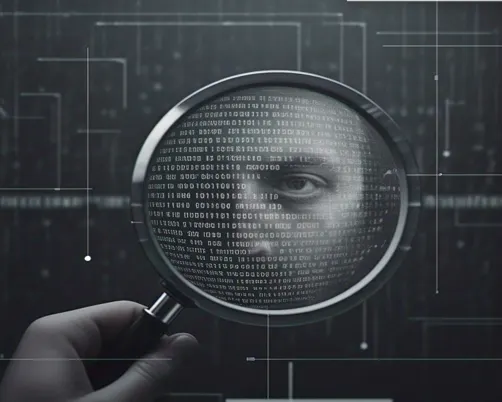
The Dark Side of Steganography: How Hackers Exploit Hidden Messages
Imagine a world where a harmless-looking cat meme or a catchy MP3 could secretly carry malicious code, ready to unleash chaos on your device. Sounds like something out of a sci-fi thriller, right? Welcome to The Dark Side of Steganography, where hackers master the art of hiding dangerous payloads in plain sight. This sneaky technique lets cybercriminals tuck malware, stolen data, or covert messages into everyday files like images, audio, or videos, dodging even the sharpest antivirus tools. In this deep dive, we’ll unravel how hackers exploit steganography, spotlight real-world attacks, and share practical tips to keep you safe from these invisible threats. Buckle up—it’s time to shine a light on what’s lurking in the shadows!
In this comprehensive blog post, we’ll dive deep into the shadowy world of steganography, exploring how cybercriminals leverage it, recent real-world examples, its implications, and how organizations can protect themselves from this insidious threat.
What Is Steganography?
Steganography, derived from the Greek words steganos (meaning “hidden” or “covered”) and graphein (meaning “writing”), is the practice of concealing information within another medium in a way that its existence goes unnoticed. Unlike cryptography, which scrambles data to make it unreadable without a key, steganography hides the fact that a message or payload even exists. For example, a hacker might embed malicious code in the pixels of a JPEG image or the waveforms of an audio file, making it virtually indistinguishable from an innocent file to the untrained eye or standard security tools.
Historically, steganography has been used for centuries, from ancient Greeks writing messages on wax-covered tablets to spies during World War II using invisible ink. In the digital age, however, it has taken on a far more sophisticated and dangerous form. Today, cybercriminals use steganography to hide everything from malware to stolen credit card data, exploiting the vast redundancy in digital files like images, which can store hidden information without altering their appearance or functionality.
How Hackers Exploit Steganography
Steganography’s appeal to hackers lies in its ability to evade detection. Traditional antivirus software and firewalls are designed to detect suspicious code or behavior, but steganography hides malicious payloads in files that appear benign. Here’s a closer look at how cybercriminals exploit this technique:
1. Hiding Malware in Images
One of the most common methods of digital steganography involves embedding malicious code in image files, such as JPEGs, PNGs, or BMPs. A standard JPEG image contains millions of pixels, each represented by bytes of data. By subtly altering the least significant bits (LSBs) of these pixels, hackers can embed malicious code without visibly changing the image. When the image is opened or processed by a specific script, the hidden payload is extracted and executed.
For example, in February 2023, the Red Eyes Hacking Group (APT37) used a spear-phishing campaign where a malicious JPEG image was attached to an email. When victims clicked the image, it triggered an exploit that executed shellcode, downloading a payload hidden within the image itself. This attack went undetected by most antivirus solutions because the image appeared harmless.
In another recent case reported in May 2025, threat actors were found embedding .NET malware within the bitmap resources of 32-bit applications. This multi-stage obfuscation technique used steganography to conceal the malware, making it incredibly difficult for security tools to detect until the payload was executed.
2. Concealing Communication in Network Traffic
Network steganography involves hiding data within the headers or payloads of network protocols like TCP/IP, UDP, or ICMP. This allows hackers to covertly communicate with compromised systems or exfiltrate stolen data without raising suspicion. For instance, a hacker might embed commands in the optional fields of a TCP/IP packet, which are often ignored by standard network security tools.
A notable example is the Hammertoss attack, where Russian hackers used steganography to hide commands in images uploaded to Twitter and GitHub. The malware on infected systems would periodically check these platforms, extract the hidden instructions, and execute them, all while blending in with normal internet traffic.
3. Embedding Payloads in Audio and Video Files
Audio and video files, with their large data sizes, are ideal carriers for steganographic payloads. Hackers can embed malicious code in the noise patterns of WAV files or the frames of a video, which are imperceptible to human senses. In 2019, researchers at Symantec discovered the Waterbug group hiding a backdoor in WAV files, which was used to deliver the XMRIG Monero CPU miner. Similarly, in 2020, Guardicore Labs uncovered a cryptominer hidden inside WAV audio files, demonstrating the versatility of audio steganography.
Video steganography, which combines image and audio techniques, is particularly effective for hiding large payloads. A moving stream of images and sound provides ample redundancy for embedding data, making it a favorite for sophisticated attacks.
4. Malvertising and Web Skimming
Steganography has become a key tool in malvertising (malicious advertising) and web skimming attacks, where hackers embed malicious JavaScript in banner ads or website images. In 2020, Dutch e-commerce security firm Sansec reported that threat actors hid skimming malware in Scalable Vector Graphics (SVG) files on e-commerce checkout pages. The SVG images, disguised as legitimate company logos, contained payloads that stole credit card details entered by users. Because the images used correct SVG syntax, they bypassed standard security scanners.
Another example is the Stegano exploit kit, which embedded malicious code in the alpha channel of PNG banner ads. When users visited websites hosting these ads, their browsers executed the hidden JavaScript, redirecting them to exploit kit landing pages that installed malware.
5. Zero-Day Exploits and Advanced Persistent Threats (APTs)
Steganography is often used in zero-day exploits and APTs, where attackers target specific organizations with highly tailored attacks. In 2020, Kaspersky reported that hackers targeting industrial enterprises in Japan and Europe used steganography to hide a Mimikatz downloader in images hosted on platforms like Imgur. The malware extracted data from the image’s pixels, creating an obfuscated PowerShell script that stole Windows credentials.
More recently, in February 2023, the IceBreaker attack targeted online gaming and gambling companies with a zero-day steganography exploit, embedding malicious code in images to deliver secondary payloads.
Real-World Examples of Steganography Attacks
To understand the true impact of steganography, let’s examine some high-profile attacks that have made headlines in recent years:
1. LokiBot Malware (2019–2023)
LokiBot, a notorious information-stealing malware, has frequently used steganography to hide its payloads. In one campaign, LokiBot installed itself as a .jpg file paired with an .exe file. The image contained encrypted data that, when decrypted by a Visual Basic script, executed the malware. This technique allowed LokiBot to evade traditional antivirus tools, which often overlook image files.
2. SolarWinds Attack (2020)
The infamous SolarWinds supply chain attack, attributed to Russian hackers, used steganography to disguise stolen data as XML files. The attackers embedded stolen information in seemingly legitimate files, making it difficult for security teams to detect the exfiltration. This attack breached major organizations, including Microsoft, Intel, and U.S. government agencies.
3. Magecart Web Skimming (2020)
In a sophisticated Magecart attack, hackers hid credit card-skimming code in the metadata of image files on compromised e-commerce websites. The malicious code was loaded surreptitiously when users visited the sites, stealing payment details without triggering security alerts.
4. Worok Threat Actor (2022)
In September 2022, ESET researchers discovered the Worok threat actor hiding malicious payloads in PNG files. The malware was used to target high-profile organizations, delivering backdoors and other payloads that went undetected due to the use of steganography.
5. Bitmap Malware Obfuscation (2025)
As recently as May 2025, posts on X highlighted a new steganography technique where hackers embedded .NET malware in bitmap resources of 32-bit applications. This method involved multiple layers of obfuscation, making it a significant challenge for cybersecurity defenses.
Why Steganography Is So Hard to Detect
Steganography’s effectiveness stems from its ability to blend in with normal data. Here are some reasons why it poses a unique challenge for cybersecurity professionals:
- Invisibility to Human Senses: Changes made to embed data (e.g., altering pixel values or audio waveforms) are imperceptible to humans, making manual detection nearly impossible.
- Bypassing Traditional Tools: Most antivirus and anti-malware solutions don’t scan non-executable files like images or audio for malicious content, allowing steganographic payloads to slip through.
- Zero-Day Nature: Steganography attacks often exploit unknown vulnerabilities, making them difficult to detect until a patch is developed.
- Scalability: With billions of images, videos, and audio files shared daily on platforms like social media, scanning every file for hidden data is impractical.
- Commoditization: The availability of DIY steganography toolkits, such as Steghide, OpenStego, and Crypture, has made it easier for even low-skill hackers to deploy these attacks.
The Broader Implications of Steganography Attacks
The rise of steganography in cyberattacks has far-reaching consequences:
- Increased Cybercrime Sophistication: As security defenses improve, hackers are turning to steganography to stay one step ahead. Its use in malvertising, ransomware, and APTs indicates a shift toward more covert and targeted attacks.
- Erosion of Trust in Digital Content: When seemingly innocuous files like images or audio can harbor malware, users and organizations may become wary of downloading or sharing content, impacting digital ecosystems.
- Challenges for Law Enforcement: Steganography’s covert nature makes it difficult to trace attacks back to their perpetrators, complicating efforts to combat cybercrime.
- Economic Impact: Steganography-enabled attacks, such as web skimming or ransomware, can lead to significant financial losses for businesses and consumers. For example, the 2020 SolarWinds attack cost affected organizations millions in damages and recovery efforts.
How to Protect Against Steganography Attacks
While steganography is a formidable threat, organizations can take proactive steps to mitigate its risks. Here are some strategies:
1. Implement Content Disarm and Reconstruction (CDR)
CDR technology, like that offered by Votiro, neutralizes steganographic threats by breaking down files into their basic components and reconstructing them with only vendor-approved elements. This removes hidden malicious code while preserving file functionality. In a case study, Votiro’s CDR sanitized a steganographic image, preventing a potential breach.
2. Use Advanced Steganalysis Tools
Steganalysis, the practice of detecting hidden data, relies on tools like StegAlyze, StegExpose, and hex viewers to identify anomalies in files. While not foolproof, these tools can help uncover steganographic payloads. Machine learning algorithms are also improving steganalysis by detecting abnormal software behavior.
3. Monitor Network Traffic
Network steganography can be countered by closely monitoring network protocols for unusual patterns. Tools like Wireshark or intrusion detection systems (IDS) can help identify covert communications hidden in packet headers.
4. Employee Training
Phishing campaigns often deliver steganographic payloads. Training employees to avoid clicking on suspicious links or downloading files from unknown sources can reduce the risk of infection.
5. Regular Backups and Integrity Checks
Maintaining clean backups and performing integrity checks on files can help detect and revert unauthorized modifications caused by steganographic malware.
6. Leverage Behavioral AI
Behavioral AI, as used by solutions like SentinelOne, can detect the execution of malicious code regardless of its source, making it effective against steganographic attacks.
The Future of Steganography in Cybersecurity
As cybercriminals continue to refine their techniques, steganography is likely to become even more prevalent. Researchers like Wojciech Mazurczyk, who studies steganography at Warsaw University of Technology, warn that we’re only seeing the “beginning of the rope” when it comes to sophisticated steganographic attacks. Emerging trends include:
- AI-Driven Steganography: Hackers may use artificial intelligence to create more complex hiding algorithms, making detection even harder.
- IoT Exploitation: The proliferation of Internet of Things (IoT) devices offers new mediums for steganographic attacks, such as embedding malware in sensor data.
- Social Media as a Vector: Platforms like Twitter, Imgur, and GitHub will continue to be exploited for hosting steganographic payloads, leveraging their high traffic to mask malicious activity.
On the defensive side, advancements in machine learning and steganalysis will play a crucial role in countering these threats. Collaboration between industry, academia, and law enforcement, as advocated by the Criminal Use of Information Hiding (CUIng) Initiative, will be essential to develop new detection tools and protocols.
Conclusion
Steganography, once a niche technique reserved for spies and sophisticated hackers, has become a mainstream tool in the cybercriminal arsenal. Its ability to hide malicious payloads in plain sight makes it a formidable threat, capable of bypassing even the most robust security defenses. From embedding malware in images to concealing commands in network traffic, hackers are exploiting steganography’s stealth to devastating effect.
However, by understanding how steganography works and implementing proactive defenses like CDR, steganalysis, and employee training, organizations can stay ahead of this evolving threat. As the digital landscape continues to grow, staying vigilant and informed about techniques like steganography will be critical to safeguarding data, systems, and trust in the online world.
Stay safe, and keep your eyes open for what’s hiding in plain sight.
Disclaimer
The information provided in this blog post is for educational and informational purposes only. It is not intended to serve as professional advice or a substitute for expert cybersecurity consultation. While every effort has been made to ensure the accuracy and timeliness of the content, the field of cybersecurity is constantly evolving, and new threats may emerge.
The authors and publishers are not responsible for any errors, omissions, or damages arising from the use of this information. Readers are encouraged to consult with qualified cybersecurity professionals and conduct their own research before implementing any security measures or strategies discussed herein. Links to external websites are provided for convenience and do not constitute an endorsement of their content.
Frequently Asked Questions About Steganography and Cybersecurity
What exactly is steganography, and why should I care about it?
Steganography is like a secret handshake for hackers—it’s the art of hiding data, like malicious code or stolen info, inside everyday files like images or audio tracks so no one suspects a thing. You should care because it’s a sneaky way cybercriminals can slip past antivirus software and cause serious damage, like stealing your data or infecting your device. Knowing about it helps you stay one step ahead!
How can hackers hide stuff in something as simple as a photo?
It’s wild, right? Digital images have tons of tiny data points (like pixels), and hackers can tweak the tiniest bits of that data to hide their code without changing how the image looks. For example, they might alter a pixel’s color value just enough to embed a message or malware, but your eyes can’t tell the difference. Special software then pulls out the hidden stuff when needed. It’s like hiding a note in a painting!
Are there tools to detect steganography, or is it totally invisible?
Good news: it’s not totally invisible! There are tools like StegExpose and StegAlyze that can spot suspicious patterns in files, kind of like a detective looking for clues. Plus, advanced cybersecurity systems using AI can catch weird behavior from hidden code. But it’s tricky, and not every tool catches everything, so staying proactive with security is key.
Can I protect myself from steganography attacks at home?
Absolutely! Start with the basics: don’t click on sketchy links or download files from unknown sources, since that’s how steganography often sneaks in. Keep your antivirus software updated, and consider tools that scan for weird file behavior. Also, regular backups are a lifesaver if something does slip through. It’s like locking your doors and keeping a spare key hidden!
Is steganography only used by bad guys, or does it have legit uses too?
Not just for villains! Steganography has some cool, legit uses, like watermarking images to protect copyrights or securely sharing sensitive info without anyone knowing. Think of it like a secret code between spies—but the good kind. Unfortunately, hackers love it too, which is why it’s got such a shady rep in cybersecurity. It’s all about how the tool is used!
Also Read
What’s the Best VPN for Beginners in 2025?







